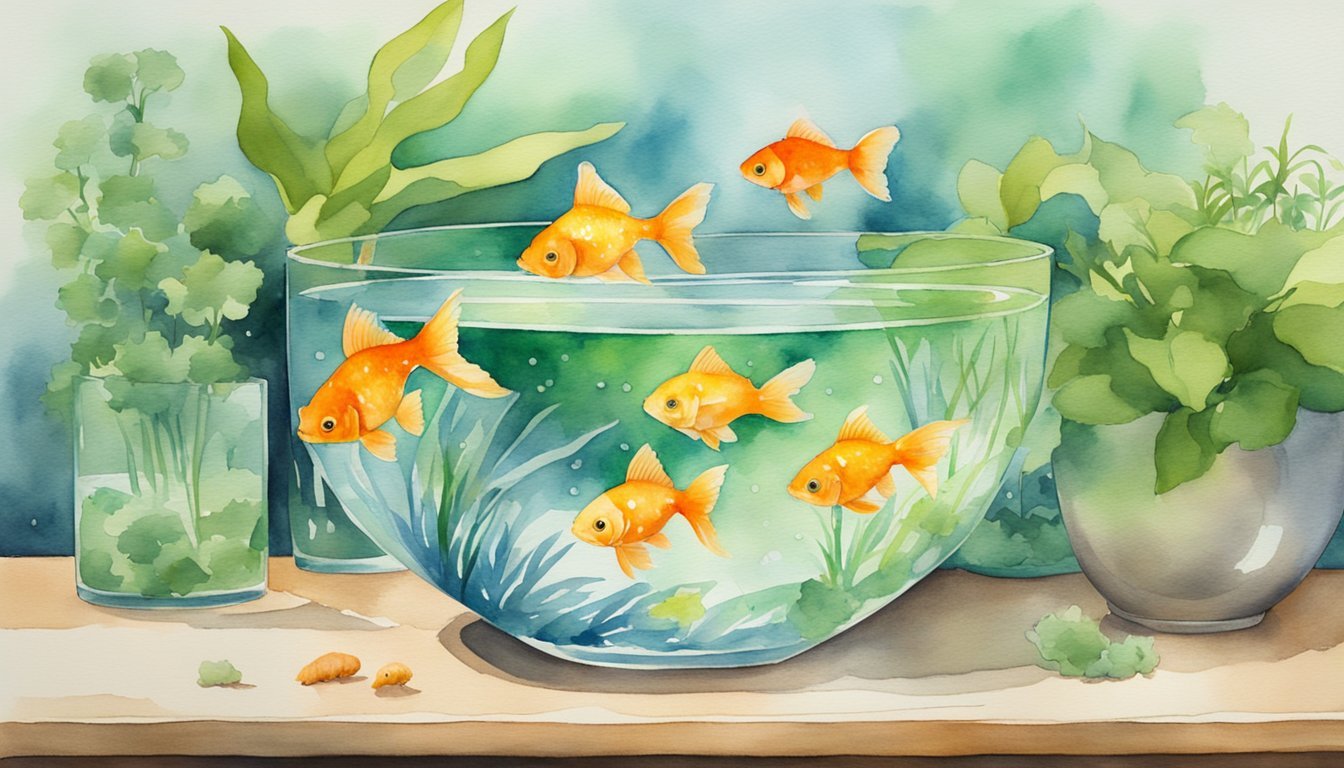Goldfish Basics
Goldfish, known scientifically as Carassius auratus, are a popular aquatic pet revered for their rich history and vibrant presence in home aquariums. Their care encompasses understanding their specific species traits, various appearances, and the environment requirements they need to thrive.
Species Overview
The goldfish is a domesticated version of a wild carp, a member of the Cyprinidae family. This species has been bred selectively for various traits, which has resulted in the diverse varieties seen today. Goldfish are distinctive for their ability to adapt to different environments, having been domesticated for over a thousand years.
Anatomy and Appearance
Typically, goldfish possess a shimmering array of colors, including orange, yellow, white, red, black, and a combination of these. Ranging in size from just a few inches to, in rare cases, over a foot in length, their anatomy features prominent fins and scales that contribute to their dynamic swimming. A genetic mutation from their wild ancestors resulted in the absence of the coloration that would otherwise camouflage them in their natural habitat.
Goldfish Varieties
Through centuries of domestication and selective breeding, a multitude of goldfish varieties have emerged. Some of the more popular varieties include the Comet, known for its long, flowing fins; the Oranda, with its distinctive “wen” or cap; and the Ryukin, a deep-bodied variety often sought after for its elegant and unique body shape.
Habitat Requirements
Goldfish require ample space to live and thrive, with experts recommending approximately 24 square inches of surface area per inch of fish. They are remarkably adaptable, capable of living in diverse water conditions, from hard to soft, and acid to alkaline. The tank should not be overpopulated and should be properly cycled, a process that usually takes around 4 to 6 weeks to establish beneficial bacteria and stable water conditions. Temperature and pH levels should be monitored, with an ideal range being 70°F to 75°F and a pH of 7.0 to 8.0 for a healthy goldfish environment.
Care and Management

Proper care and management of goldfish are crucial for ensuring a healthy and thriving environment for these popular aquatic pets. From the complexities of tank setup to the intricacies of diet, each aspect plays a pivotal role in the wellbeing of goldfish.
Aquarium Setup
An adequate aquarium setup is the foundation of goldfish care. Goldfish require a spacious tank to grow and thrive, not the common misconception of a small bowl being sufficient. For a single goldfish, a minimum of a 20-gallon tank is recommended, with an additional 10 gallons for each extra fish. The tank needs a filtration system to keep the water clean and maintain the necessary oxygen levels as they are cold water fish with significant oxygen demands. Learn about proper aquarium setup for goldfish.
- Tank Size: Minimum 20 gallons for one goldfish, plus 10 gallons per additional fish.
- Filtration: Essential to maintain cleanliness and oxygenation.
Feeding and Diet
A balanced diet is essential for the health of goldfish. Goldfish should be fed a diet that matches their nutritional requirements, which consists of 30-35% protein and 5-7% fat. It is important to feed them as much as they can eat in 3-5 minutes to prevent overfeeding and maintain water quality. Varieties of food include flakes, pellets, and the occasional treat of fresh vegetables or live food. For specific dietary needs, refer to recommendations on goldfish diets.
- Daily Feeding: 3-5 minutes of feeding time.
- Nutritional Needs: 30-35% protein and 5-7% fat.
Health and Well-being
Goldfish health is indicative of their environment. Clean, well-oxygenated water, proper feeding, and regular tank maintenance reduce the risk of disease. Signs of poor health in goldfish include changes in swimming patterns, color, and appetite. A common health issue is digestive problems, often due to poor diet or water conditions. Information on maintaining goldfish health can be a valuable resource.
- Water Quality: Regular partial water changes every 1-2 weeks.
- Observation: Monitor fish behavior and appearance for signs of distress or disease.
Breeding and Lifecycle
The breeding of goldfish can be a rewarding experience. Goldfish become reproductively active in pond or tank settings when water temperatures are appropriate. They are egg layers, and breeding involves the females laying eggs which the males then fertilize. The eggs hatch into fry, which require careful feeding with high-protein food to support their rapid growth. Understanding the breeding and lifecycle of goldfish can enhance breeding success.
- Breeding Conditions: Triggered by increasing water temperatures.
- Development: Careful feeding of fry with high-protein food for growth.

